
In the vast and intricate tapestry of orchestral and chamber music, certain instruments, while foundational, often operate with a quiet dignity, their indispensable contributions sometimes overshadowed by the more overtly prominent voices. Among these, the viola holds a unique and profound position, serving as the essential alto or middle voice of the violin family. It is an instrument whose rich, warm timbre provides a crucial harmonic and melodic bridge, connecting the soaring lines of the violin with the resonant depths of the cello. Its subtle yet powerful presence is fundamental to the cohesive sound of countless ensembles, underscoring its pivotal, if often understated, role in the musical landscape.
Historically, the viola’s narrative is one of steady evolution and increasing recognition, moving from an ensemble workhorse to an instrument capable of compelling soloistic expression. Its journey through centuries of musical development has been marked by continuous refinement in design, technique, and repertoire, culminating in the versatile instrument appreciated by musicians and audiences today. This article embarks on an in-depth exploration of the viola, aiming to illuminate its multifaceted world, from its historical origins and intricate construction to the specific skills required for its mastery and its diverse applications across various musical genres.
Through a comprehensive examination, we will uncover the unique characteristics that define the viola, differentiate its playing from that of its kin, and trace its path through the annals of music history. This detailed survey is designed to offer a clearer understanding and deeper appreciation for an instrument that, while often perceived as the understated sibling, is undeniably vital to the richness and complexity of musical expression.

1. A Legacy Unveiled: The Viola’s Historical Journey and Nomenclature
The origins of the viola, a quintessential member of the violin family, are deeply rooted in the early Renaissance period, reflecting a gradual evolution from the broader viol family of instruments. This lineage positions the viola as a descendant of instruments such as the viola da braccio, a term meaning, quite literally, ‘of the arm,’ which served to distinguish it from the viola da gamba, or ‘leg viol,’ played between the legs. For centuries, this fundamental distinction shaped the trajectory of string instrument development, with the ‘arm viols’ eventually leading to the modern violin family.
As the instrument developed across Europe, it acquired a variety of names that reflected both its size and its specific role within ensembles. The Italians, whose language often serves as the bedrock of musical terminology, frequently used the term ‘viola da braccio’ or simply ‘brazzo,’ a name so evocative that the Germans adopted it as ‘Bratsche,’ a designation still in use today. This linguistic migration underscores the instrument’s widespread adoption and the continuous cross-cultural exchange that characterized musical innovation during these periods.
The French, too, contributed to the viola’s diverse nomenclature, employing terms such as ‘cinquiesme’ for a smaller viola, ‘haute contre’ for a larger instrument, and ‘taile’ for a tenor voice. These varying names not only indicated differences in physical dimensions but also hinted at the flexible and often interchangeable roles the viola might assume within the evolving structures of early orchestral and chamber music. Today, however, the French predominantly use the term ‘alto,’ a direct and concise reference to the instrument’s characteristic middle-range voice.
In its earlier manifestations, up until the eighteenth century, the viola was particularly popular during the heyday of five-part harmony. Within these intricate musical textures, it frequently carried three lines of the harmony, occasionally even taking on the melody line, demonstrating its versatility and importance in providing structural integrity to compositions. This period solidified its identity as a crucial inner voice, a role that would continue to define much of its utility in subsequent centuries of orchestral and chamber writing.
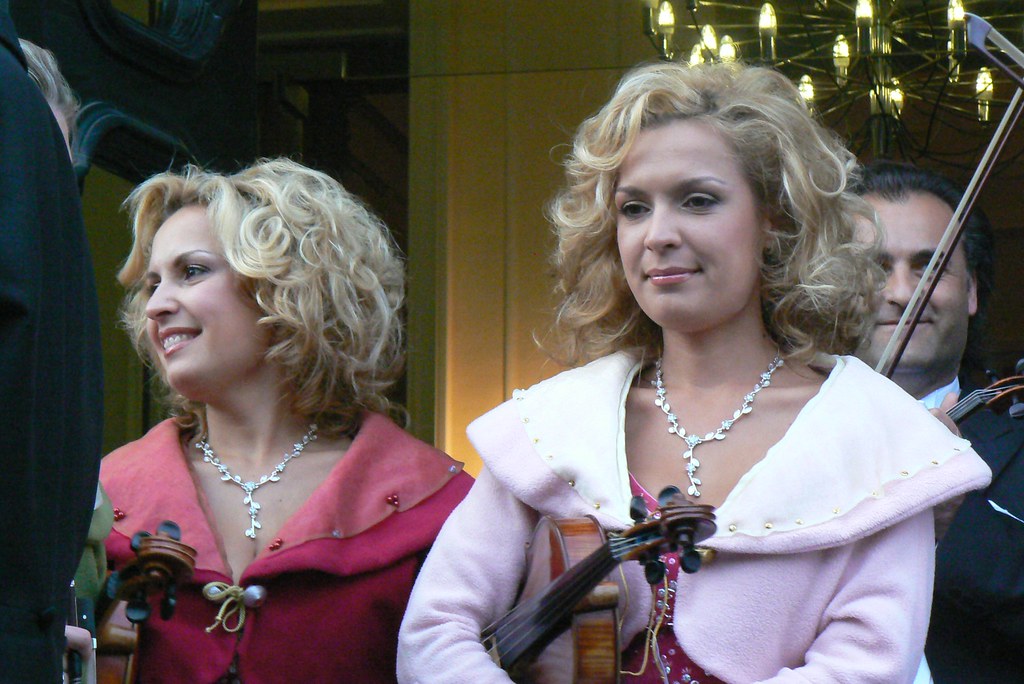
2. Bridging the Sonic Divide: Defining Characteristics and Acoustical Nuances
The viola occupies a crucial intermediary position within the string family, serving as the definitive middle or alto voice. While it shares many fundamental characteristics with its siblings, the violin and the cello, its unique attributes bestow upon it a distinctive sonic personality. It is, first and foremost, a string instrument of the violin family, typically bowed when played, embodying the core principles of bowed chordophones.
Physically, violas are discernibly larger than violins, a characteristic that directly contributes to their lower sound and richer timbre. This size difference is not merely cosmetic; it is acoustically essential, allowing for longer string lengths and a greater internal air volume within the instrument’s body. The increased scale length and larger resonating chamber enable the production of deeper, more resonant frequencies, differentiating its voice from the brighter, more piercing tones of the violin.
Since the 18th century, its established role has been to bridge the gap between the higher-pitched violin, which is tuned a perfect fifth higher, and the lower-pitched cello, tuned an octave lower. This strategic placement makes the viola indispensable for achieving a full and balanced harmonic spectrum within an ensemble. The strings, from low to high, are typically tuned to C₃, G₃, D₄, and A₄, a tuning scheme that is precisely one perfect fifth below that of the violin, meaning they share three common strings: G, D, and A. This commonality allows for a degree of technical transferability while maintaining a unique tonal character.
The resulting tone of the viola is widely described as darker, weightier, and warmer than that of the violin. This mellowness is not just a matter of subjective perception; it is a direct consequence of its construction, string gauges, and pitch range. The viola’s capacity to blend seamlessly with other instruments, while also possessing a rich expressive potential, makes it an ideal instrument for providing both harmonic depth and subtle melodic interest, forming the very heart of the string section’s collective sound.
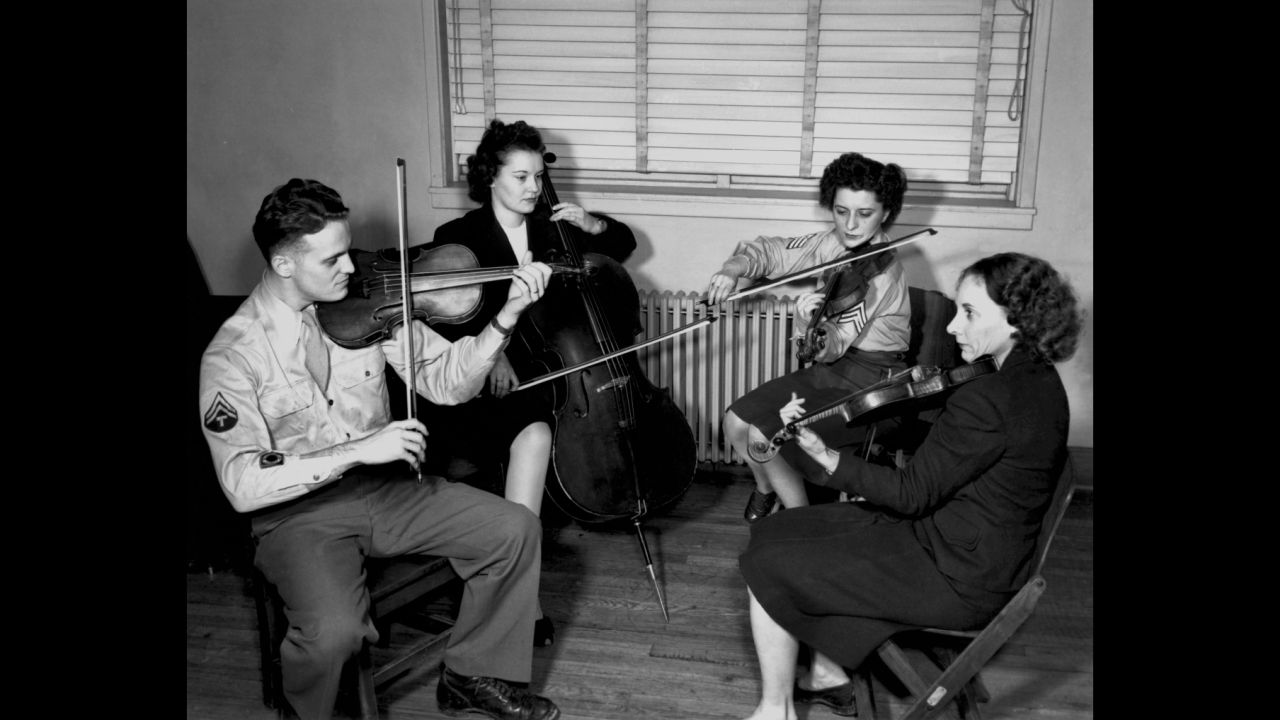
3. **The Heart of the Ensemble: The Viola’s Integral Role in Pre-20th Century Orchestral and Chamber Music**
In the intricate architecture of string quartets and grand symphonic writing, the viola often assumes the pivotal role of playing the “inner voices.” While it may not always command the spotlight with soaring melodies, its contribution is unequivocally vital, providing harmonic filler and counter-melodic support that underpins the entire musical structure. This nuanced function ensures the richness and depth of the ensemble sound, preventing it from sounding thin or incomplete. Its parts are more frequently dedicated to accompaniment than those of the first violin, cementing its role as a crucial backbone rather than a primary melodic lead.
Despite its customary role, the viola has, on occasion, ascended to a major, soloistic prominence in orchestral or chamber music, even in earlier periods. These instances often highlight the instrument’s expressive capabilities and unique timbre, demonstrating its capacity to carry a significant narrative or thematic weight. Notable examples include the poignant solo passages in Richard Strauss’ symphonic poem *Don Quixote*, the introspective depth of Dmitri Shostakovich’s 13th Quartet, and the extensive main viola line in Hector Berlioz’s symphony *Harold en Italie*, each piece showcasing the viola in a distinctly prominent light.
However, in much of early orchestral music, the viola part was typically more constrained, often limited to filling in harmonies. Melodic material was sparse, and when the viola was given a melodic line, it frequently duplicated or played in unison with melodies performed by other string sections. This historical practice underscores a period where the viola’s unique voice was not yet fully explored as an independent entity, rather serving primarily as a reinforcing element within the broader string texture.
J. S. Bach’s *Brandenburg Concertos* stand out as remarkable exceptions to this trend in their imaginative use of the viola for their time. The Third Concerto Grosso, scored for an unusual ensemble including three violins, three violas, and three cellos, demands considerable virtuosity from its violists. Notably, Viola I features a demanding solo in the final movement, a passage so significant that it is commonly required in orchestral auditions today. Even more uniquely, the Sixth Concerto Grosso, composed for two violas ‘concertino’ along with cello and two violas da gamba, assigns the primary melodic roles directly to the two violas, a rare and innovative choice that foregrounds the instrument’s expressive potential.
Beyond Bach, other significant composers began to explore the viola’s capabilities more deeply in chamber music. Mozart, for instance, employed the viola in profoundly creative ways, particularly in his six string quintets. These works utilize two violas, a configuration that liberates the instruments—especially the first viola—for more prominent solo passages and greatly expands the variety of textures and thematic interplay possible within the ensemble. Mozart also featured the viola in his *Sinfonia Concertante*, a pair of duets for violin and viola, and in the *Kegelstatt Trio* for viola, clarinet, and piano, all demonstrating an appreciation for its unique voice. Composers such as Felix Mendelssohn, Robert Schumann, Max Bruch, Johannes Brahms, and Antonín Dvořák, himself an avid violist, further enriched the pre-20th century repertoire with important and often soloistic viola parts, progressively elevating its status and showcasing its emotional depth.
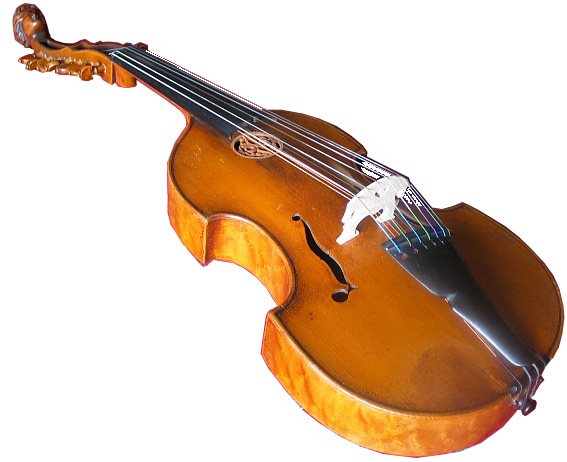
4. Crafting the Core: Construction, Materials, and the Quest for Ideal Form
The construction of a viola largely mirrors that of a violin, employing similar materials and adhering to time-honored principles of lutherie. Typically, the instrument is crafted from fine tonewoods, with the back, ribs, and scroll commonly made of maple, known for its resonant qualities and attractive flame patterns. The top, or soundboard, is almost universally fashioned from spruce, a wood prized for its lightness and superior acoustic properties, which are crucial for projecting sound effectively. These material choices, refined over centuries, are fundamental to the instrument’s distinctive voice.
One of the most defining physical differences between the viola and the violin lies in its size. A full-size viola’s body is typically between 25 and 100 millimeters (1 to 4 inches) longer than that of a full-size violin, with measurements ranging from approximately 38 to 46 centimeters (15–18 inches), and an average length often cited at 41 centimeters (16 inches). This greater physical dimension is directly linked to its lower pitch and darker timbre, as a larger body allows for longer vibrating string lengths and a greater volume of air to resonate within the instrument. For children, smaller violas are specifically designed, often starting at 30 cm (12 inches), and in some cases, fractional-sized violins are even strung with viola strings to accommodate very young players.
Crucially, unlike the violin, the viola does not possess a single, universally standardized ‘full size.’ This historical variability has led to a rich diversity in viola designs, reflecting a continuous quest by makers to balance ergonomic playability with optimal acoustic output. Acoustically, to achieve the equivalent resonance and power of a violin, a viola body would ideally need to measure approximately 51 centimeters (20 inches) long. However, such a large instrument would be impractical to hold under the chin and would need to be played vertically, much like a cello, giving rise to instruments known as ‘Vertical violas.’ This inherent tension between acoustic ideals and practical playability has driven much of the innovation in viola design.
For centuries, viola makers have engaged in extensive experimentation with the size and shape of the instrument. Their efforts have often focused on adjusting proportions or modifying the body outline to create a lighter instrument with shorter string lengths, while simultaneously striving to maintain a soundbox large enough to preserve the viola’s characteristic deep and mellow tone. Prior to the eighteenth century, this lack of uniformity was even more pronounced, with violas existing in a wide array of sizes. Large violas, often referred to as ‘tenors,’ were specifically designed to play the lower register viola lines or served as second violas in five-part harmony, depending on the specific instrumentation required. Conversely, smaller violas, closer in size to the violin, were known as ‘alto violas’ and were better suited for higher register writing, particularly for viola 1 parts, as their sound was typically richer in the upper register but less full in the lower, highlighting the specific acoustic compromises inherent in varying sizes.
Read more about: The Definitive Guide to Toughness: Reviewing 13 Top Military-Grade Watches for 2025
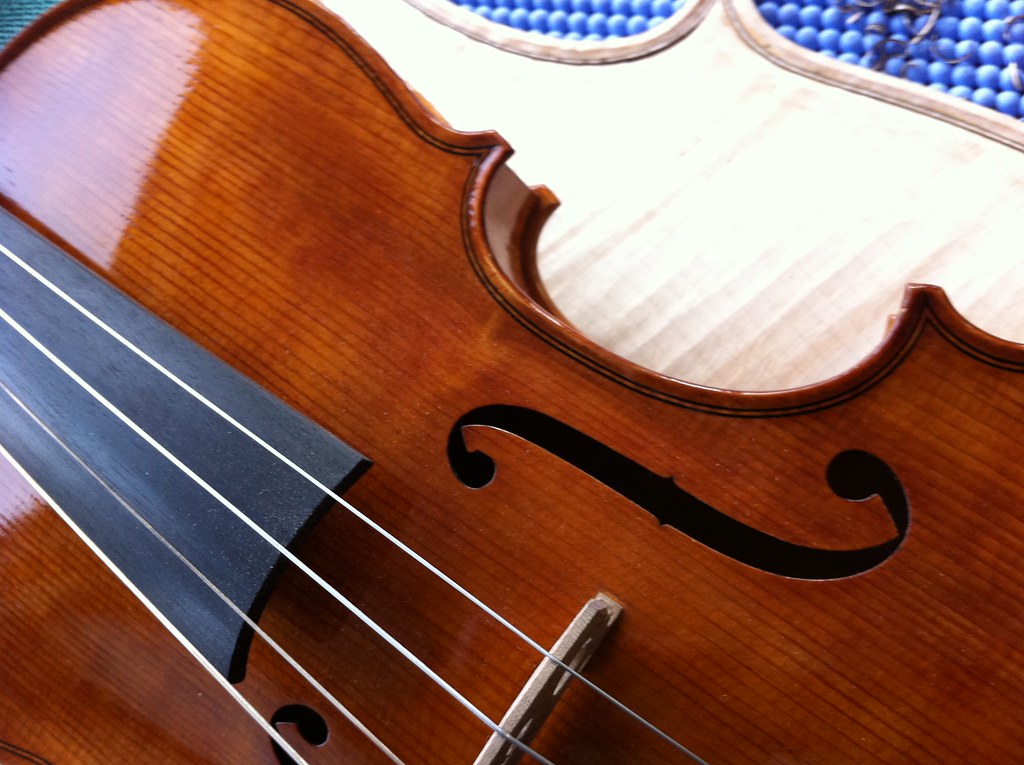
5. Innovation in Form: Ergonomic Solutions and Radical Design Experiments
The inherent challenge of balancing the viola’s acoustic requirements with the ergonomic needs of the player has driven continuous innovation in instrument design. One of the earliest and most notable attempts to enhance the viola’s sound through increased size was Hermann Ritter’s viola alta, which measured approximately 48 centimeters (19 inches). This larger instrument was specifically conceived for use in Richard Wagner’s grand operas, where a more powerful and resonant viola voice was deemed necessary to cut through the expansive orchestral textures of the Romantic era. While the viola alta found some proponents, its substantial size presented considerable challenges for players.
Another significant development in shaping the viola’s physical form to improve its tone is the Tertis model viola. Designed by the influential English violist Lionel Tertis, this model features wider bouts and deeper ribs compared to traditional designs. These modifications were intended to promote a better, more resonant tone, allowing the player to utilize a larger instrument more effectively. The Tertis model represents a slightly ‘nonstandard’ shape that prioritizes acoustic quality without entirely sacrificing playability, demonstrating an ongoing dialogue between makers and performers regarding optimal design.
However, many experiments focused on increasing the viola’s body size, particularly to achieve a deeper tone, have often resulted in instruments that closely resemble the timbre of a cello. While musically interesting, such changes can have unintended consequences on the balance within ensembles, particularly in orchestral music where composers historically wrote for a more traditional-sized viola. The distinct voice of the viola, positioned between the violin and cello, is crucial for specific harmonic and textural effects, and altering its fundamental tone can disrupt these established relationships.
In the 20th century, Englishman A. E. Smith emerged as one of the most notable makers of violas, his instruments now highly sought after and greatly valued. His violas are particularly prominent in Australia, his country of residence, where, for several decades, a significant portion of the Sydney Symphony Orchestra’s violists proudly played his instruments, testament to their quality and desirability. This underscores the impact that individual luthiers can have on the performance landscape.
More recent and often more radically shaped innovations have squarely addressed the ergonomic problems associated with playing the viola, aiming to make instruments shorter and lighter while ingeniously finding ways to preserve the traditional viola sound. These include the Otto Erdesz ‘cutaway’ viola, which features one shoulder cut out to facilitate easier shifting for the player, thereby reducing strain. The ‘Oak Leaf’ viola introduces two extra bouts, altering the instrument’s internal acoustics and external appearance. Viol-shaped violas, such as Joseph Curtin’s ‘Evia’ model, incorporate a moveable neck and a maple-veneered carbon fibre back, significantly reducing weight without compromising tone. Furthermore, ‘vertical violas’ are designed to be played in the same manner as cellos, offering an alternative for those seeking a larger sound without the ergonomic challenges of a chin-held instrument. Other eye-catching and unconventional designs include Bernard Sabatier’s ‘Dalí-esque’ violas in fractional sizes, which appear to have melted, and David Rivinus’ Pellegrina model violas, all pushing the boundaries of traditional instrument aesthetics and functionality.
Beyond radical external shapes, other experimental approaches have tackled the ‘ergonomics vs. sound’ dilemma. The American composer Harry Partch, known for his microtonal music, famously fitted a viola with a cello neck to accommodate his unique 43-tone scale, creating what he termed an ‘adapted viola.’ Additionally, luthiers have explored the creation of five-stringed violas, which expand the instrument’s playing range, allowing for greater melodic and harmonic versatility and further blurring the lines between the violin and cello registers.
Read more about: Grab Life by the Wheel: The 10 Most Jaw-Dropping Steering Wheels Ever Made
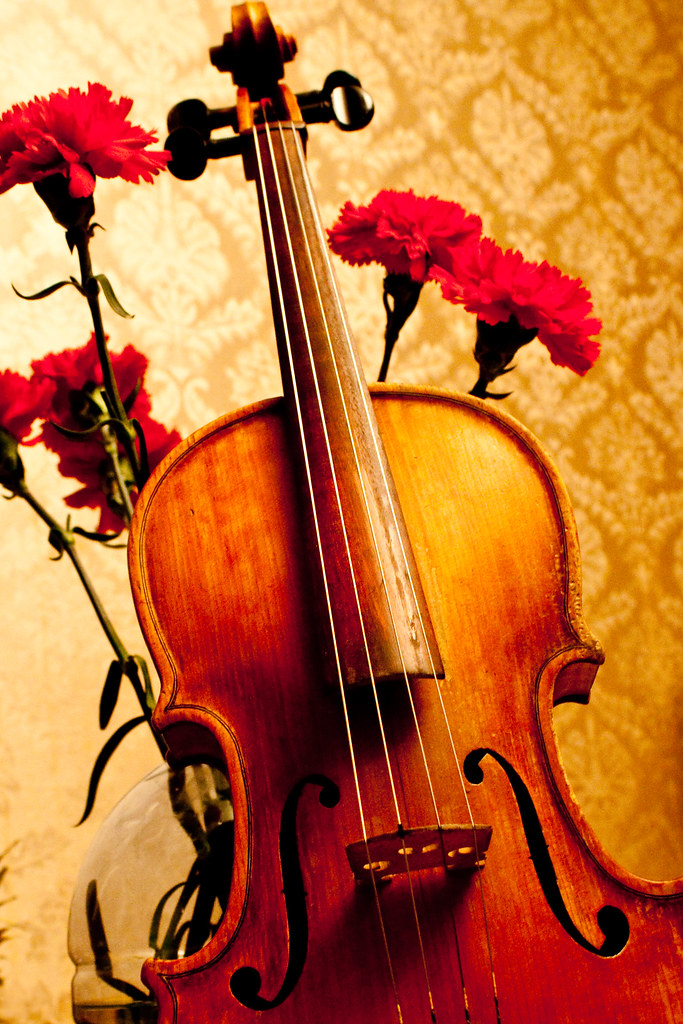
6. The Violist’s Path: Distinctive Playing Techniques and Ergonomic Adaptations
The path to mastering the viola, while sharing foundational principles with violin playing, necessitates a distinct set of techniques and ergonomic adaptations, primarily due to its larger size and the unique acoustical properties of its thicker strings. A person who plays the viola is generally referred to as a violist or a viola player, a title that denotes a specialized skill set within the broader family of string musicians. The increased dimensions of the instrument mean that the notes are spread out further along the fingerboard, frequently requiring different fingerings and a more expansive reach for the left hand compared to the violin.
Moreover, the viola’s strings are inherently less responsive than those of a violin, and its bow is noticeably heavier. These characteristics collectively demand a somewhat different bowing technique from the violist, who must learn to lean more intensely on the strings to elicit a clear and resonant tone. This increased bow weight and necessary pressure contribute to the instrument’s characteristic warmth and depth of sound, but also require greater physical engagement and control from the player.
The viola is held in a manner akin to the violin, positioned on top of the left shoulder, nestled between the shoulder and the left side of the face, secured by the chin. However, the viola’s larger size necessitates specific adjustments to accommodate the player’s physique. Violists with shorter arms, for instance, often opt for smaller-sized instruments to ensure greater ease and comfort in playing, preventing undue strain and facilitating proper technique. The most immediately noticeable adjustment for a player accustomed to the violin is the requirement for wider-spaced fingerings, demanding greater flexibility and extension from the left hand.
It is also common for violists to employ a wider and more intense vibrato in the left hand, often utilizing the fleshier pad of the finger rather than just the very tip, which contributes to the viola’s rich, singing quality. Furthermore, violists typically hold the bow and position their right arm further away from their body compared to violinists. To effectively reach the lowest string and ensure firm pressure for a clear tone, a violist must bring their left elbow further forward or around, a crucial ergonomic adjustment. The instrument’s dimensions also mean that different positions, including half position, are often employed to navigate the fingerboard efficiently.
The viola is strung with thicker gauge strings than the violin, a characteristic that, in conjunction with its larger size and lower pitch range, contributes significantly to its deeper and mellower tone. This choice of thicker strings, however, also means that the viola responds to changes in bowing more slowly than the violin. Practically speaking, in an ensemble where a violist and violinist play together, the violist must initiate their bow movement a fraction of a second sooner than the violinist to achieve synchronous sound. The increased string thickness also necessitates the application of more weight with the bow to properly set them into vibration, reinforcing the demand for a distinct and robust bowing technique.
The viola’s bow itself is distinct. It features a wider band of horsehair than a violin’s bow, a difference particularly evident near the frog, or heel. Viola bows are also considerably heavier, typically weighing between 70 and 74 grams (2.5–2.6 oz), compared to violin bows which range from 58 to 61 grams (2.0–2.2 oz). The profile of the rectangular outside corner of a viola bow frog is generally more rounded than that found on violin bows, subtle yet indicative of the specialized design considerations for this unique instrument.
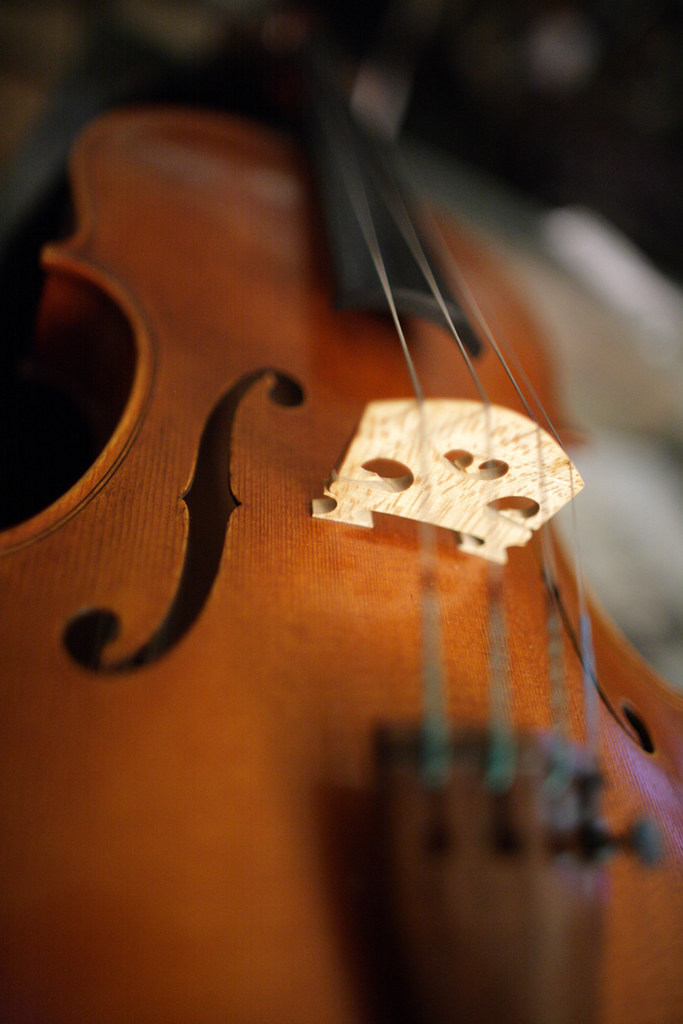
7. Harmonizing the Strings: Tuning Conventions and Alternative Practices
The viola’s voice, crucial to the harmonic richness of any ensemble, is underpinned by its distinct tuning. Its four strings are typically tuned in perfect fifths, starting with the lowest string, C, which resonates an octave below middle C. Following this, the strings ascend to G, D, and finally, A. This precise tuning scheme positions the viola exactly one perfect fifth below the violin, creating a shared harmonic landscape as both instruments feature G, D, and A strings. This unique arrangement also places the viola an octave above the cello, firmly establishing its intermediary tonal role within the string family.
Achieving this precise tuning involves a methodical process, commencing with the A string. This string is usually tuned first to a standard reference pitch, which typically ranges between 400 and 442 Hz, depending on the ensemble’s preference. Once the A string is accurately set, the remaining strings—C, G, and D—are tuned in perfect fifths relative to each other, a task often accomplished by bowing two strings simultaneously to check the interval. Most violas are also equipped with fine tuners, small adjusters located above the tailpiece, which allow for more delicate and precise pitch corrections, a feature particularly beneficial for younger players or those still developing their ear and dexterity with the main pegs.
While the C-G-D-A tuning is standard for the vast majority of viola music, there are occasional deviations. For instance, some violists might choose to reverse the C and G strings, a rare practice aimed at preventing the thicker C string from turning too sharply over the nut. Beyond such minor adjustments, temporary tuning modifications can also be made during performances by gently stretching a string over the fingerboard to lower its pitch, or by pressing the string within the pegbox to raise it. These quick, on-the-fly techniques can prove invaluable in live concert settings, providing a temporary remedy for an out-of-tune string until a more opportune moment for proper tuning arises.
The historical practice of *scordatura*, or alternative tunings, has also found its place in the viola repertoire, both in classical compositions and certain folk styles. A notable example is Wolfgang Amadeus Mozart’s *Sinfonia Concertante for Violin, Viola and Orchestra in E♭*, where the viola part is innovatively written in D major, with a specific instruction for the violist to raise all strings by a semitone. This ingenious device was likely intended to impart a brighter, more brilliant tone to the viola, ensuring its voice would not be overshadowed by the robust orchestration. Similarly, the influential violist Lionel Tertis, in his transcription of the Elgar Cello Concerto, specified that the C string be tuned down to B♭ for the slow movement, enabling the viola to access a lower octave for a particular passage, thus demonstrating the instrument’s adaptability and expanded expressive potential through modified tunings.
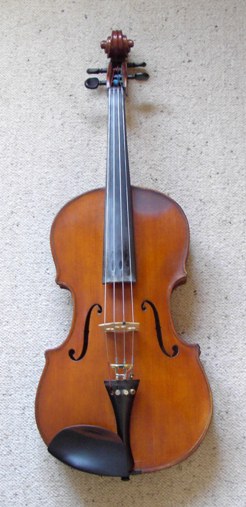
8. A Flourishing Voice: The Viola’s Repertoire in the 20th Century and Beyond
The early 20th century marked a significant turning point for the viola, as a burgeoning interest from both performers and composers led to a dramatic expansion of its repertoire. This renaissance was largely spurred by the emergence of specialized soloists, such as the renowned Lionel Tertis and William Primrose, who tirelessly championed the instrument and inspired a new generation of creative works. English composers like Arthur Bliss, Edwin York Bowen, Benjamin Dale, Frank Bridge, Benjamin Britten, Rebecca Clarke, and Ralph Vaughan Williams were among those who responded to this call, writing substantial chamber and concert pieces, many of which were specifically commissioned by or dedicated to Tertis, cementing his pivotal role in the viola’s elevated status.
This period saw the creation of several well-known viola concertos that remain cornerstones of the repertoire. William Walton, Bohuslav Martinů, and Béla Bartók each contributed significant concertos that highlighted the instrument’s expressive capabilities. Paul Hindemith, himself an accomplished violist, further enriched the landscape by composing a considerable body of music for the instrument, including his notable concerto *Der Schwanendreher*, often performing his own works. Additionally, Claude Debussy’s *Sonata for flute, viola and harp* proved to be an influential composition, inspiring a notable number of other composers to explore this intriguing instrumental combination, thereby diversifying the viola’s presence in chamber music.
The mid-20th century continued this trajectory, with American composers also contributing to the growing body of viola works. Charles Wuorinen composed his virtuosic *Viola Variations* in 2008 for Lois Martin, while Elliott Carter penned several pieces, including his *Elegy* (1943) for viola and piano. Ernest Bloch, a Swiss-born American composer renowned for his Jewish-inspired compositions, left two celebrated works for the instrument: the *Suite 1919* and the *Suite Hébraïque* for solo viola and orchestra. Rebecca Clarke, herself a violist, also made extensive contributions to the instrument’s literature. Interestingly, Lionel Tertis recorded that such luminaries as Edward Elgar, Alexander Glazunov, and Maurice Ravel had all expressed intentions to write viola concertos, though tragically, all three passed away before undertaking any substantial work on these promised compositions, leaving an intriguing ‘what if’ in the instrument’s history.
The latter half of the 20th century witnessed an even more substantial explosion of new repertoire, solidifying the viola’s position as a soloistic and ensemble powerhouse. Composers such as Miklós Rózsa, Revol Bunin, Alfred Schnittke, Sofia Gubaidulina, Giya Kancheli, and Krzysztof Penderecki all penned significant viola concertos, each offering unique challenges and expressive opportunities. The American composer Morton Feldman dedicated an entire series of works, *The Viola in My Life*, featuring prominent concertante viola parts. The instrument’s lower overtone partials, which are more readily audible than those of the violin, also made it a favored choice in spectral music, with composers like Gérard Grisey, Tristan Murail, and Horațiu Rădulescu writing compelling solo works that exploit these sonic qualities.
The diverse landscape of viola composition continued into the Neo-Romantic and post-Modern eras, with significant contributions from composers such as Robin Holloway (*Viola Concerto Op. 56* and *Sonata Op. 87*), Peter Seabourne (*Pietà* for viola and piano), and Airat Ichmouratov (*Viola Concerto No. 1, Op. 7* and *Three Romances for Viola, Strings, and Harp, Op. 22*). This vibrant creative output underscores the viola’s dynamic and evolving role in contemporary classical music. A testament to this ongoing innovation is found in initiatives like “The Viola Project” at the San Francisco Conservatory of Music, where students collaborate with composers to premiere entirely new works, ensuring a continuous stream of fresh, original compositions for the instrument.
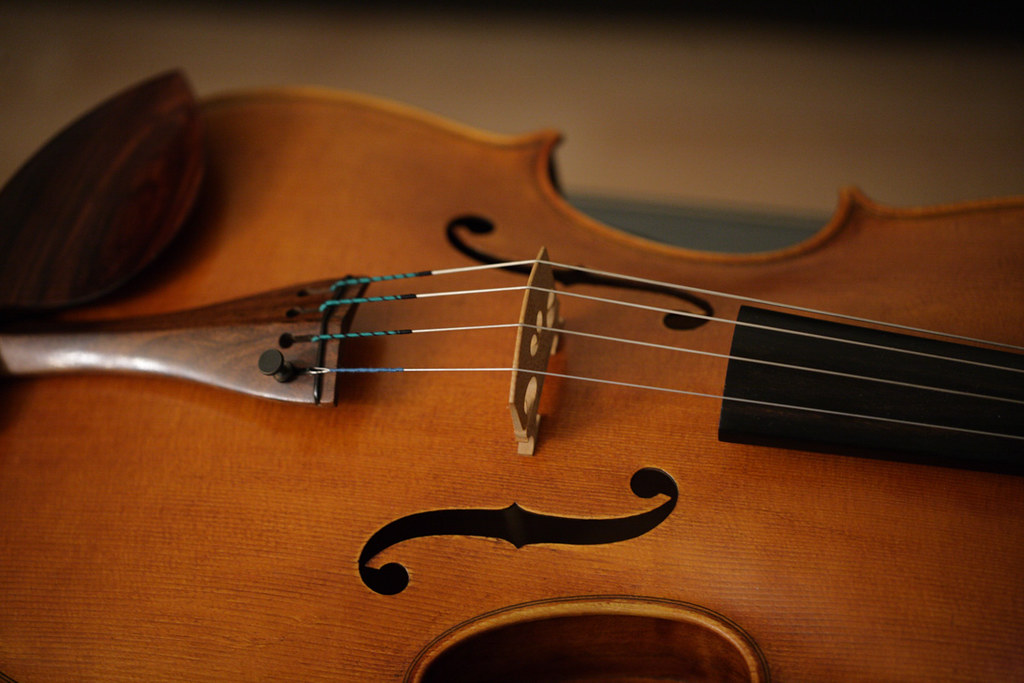
9. Beyond the Concert Hall: The Viola’s Integration into Contemporary and Popular Music
While the viola’s traditional home has always been within the esteemed halls of classical music, its distinctive voice has, perhaps unexpectedly, found resonance in the varied soundscapes of contemporary popular music. Although still somewhat unusual to feature individual bowed string instruments in these genres, the viola has carved out a niche, primarily within avant-garde and experimental contexts. A pioneering figure in this integration was John Cale of The Velvet Underground, who famously incorporated the viola into the band’s groundbreaking sound, contributing to their unique, often drone-laden aesthetic.
In more recent decades, a growing number of modern groups and artists have embraced the viola, appreciating its capacity to add depth, texture, and a unique emotional timbre to their arrangements. Alternative rock bands like 10,000 Maniacs and Imagine Dragons have featured the instrument, often using it within a broader chamber setting to enrich their sound. Other notable acts, including the folk duo John & Mary, British Sea Power, The Airborne Toxic Event, and Marillion, have also incorporated the viola, demonstrating its versatility beyond classical strictures. This integration often leverages the viola’s warm, darker tone to provide harmonic layers or poignant melodic lines that stand apart from typical rock instrumentation.
Jazz music, too, has seen its share of violists, particularly within string sections that were common in the early 1900s. As jazz evolved, a handful of quartets and soloists began to emerge from the 1960s onward, further exploring the viola’s potential for improvisation and expressive melodic work within the genre’s dynamic framework. Despite these instances, the presence of individual bowed string instruments, particularly the viola, remains a relatively rare and distinct choice in the broader landscape of contemporary popular music, making each instance of its inclusion a deliberate and often artistically significant decision that sets the sound apart.
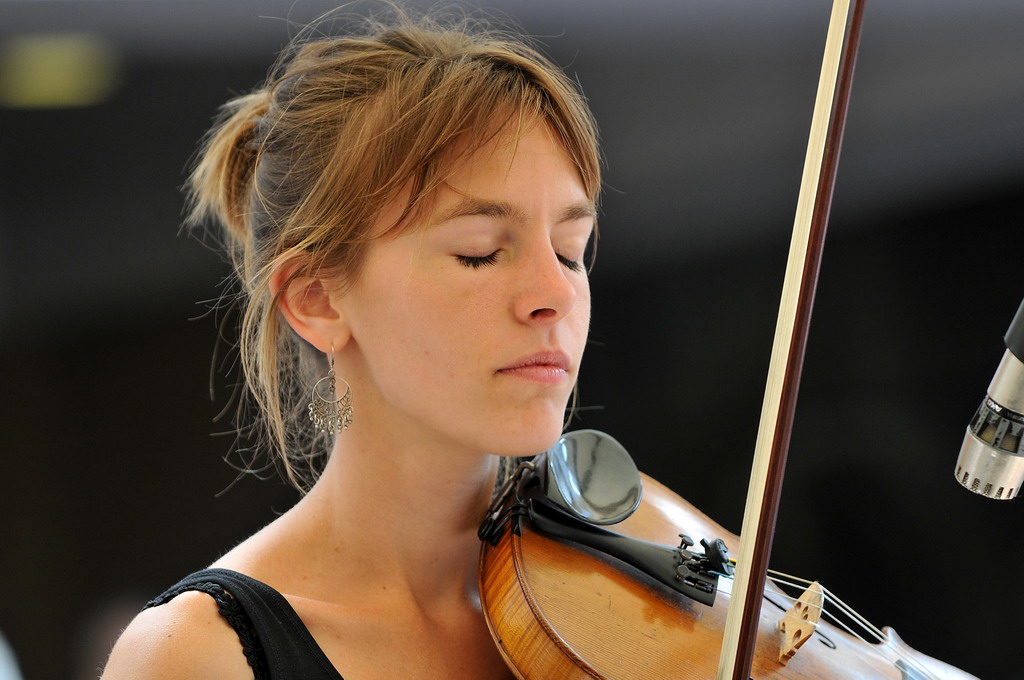
10. Maestros of the Middle Voice: A Tribute to Notable Violists and Their Contributions
The viola, for much of its history, was often overlooked in favor of its more virtuosic siblings, the violin and cello, resulting in a relatively sparse repertoire of virtuoso solo music prior to the 20th century. Consequently, there were fewer widely recognized viola virtuosi until modern times. Nevertheless, certain pre-20th century viola players left an indelible mark, including Carl Stamitz, Alessandro Rolla, Antonio Rolla, Chrétien Urhan, Casimir Ney, Louis van Waefelghem, and Hermann Ritter, who championed the instrument and its emerging capabilities during their respective eras.
The 20th century, however, witnessed a burgeoning of specialized viola soloists who elevated the instrument’s profile dramatically. Pioneers such as Lionel Tertis, William Primrose, and Paul Hindemith were instrumental in this transformation, inspiring new works and demonstrating the viola’s profound expressive potential. Other significant figures include Théophile Laforge, Cecil Aronowitz, Maurice Vieux, Vadim Borisovsky, Lillian Fuchs, Dino Asciolla, Frederick Riddle, Walter Trampler, Ernst Wallfisch, Csaba Erdélyi (notably, the only violist to win the Carl Flesch International Violin Competition), and Emanuel Vardi, who achieved the remarkable feat of being the first violist to record Paganini’s 24 Caprices on the instrument, showcasing unprecedented technical mastery.
Beyond dedicated violists, many celebrated violinists have also publicly performed and recorded on the viola, captivated by its unique timbre and expressive range. Among these luminaries are Eugène Ysaÿe, Yehudi Menuhin, David Oistrakh, Pinchas Zukerman, Maxim Vengerov, Julian Rachlin, James Ehnes, and Nigel Kennedy, all of whom have lent their formidable talents to the instrument, further broadening its appeal and demonstrating its crossover potential. Their performances underscore the deep musical connections between the violin and viola, and how a master of one can often unlock the secrets of the other.
Remarkably, several of the greatest composers throughout history preferred playing the viola when performing in ensembles, often finding its middle voice particularly appealing. Ludwig van Beethoven, Johann Sebastian Bach, and Wolfgang Amadeus Mozart are famously noted among them, valuing the viola’s crucial role in harmonically enriching the ensemble texture. Other celebrated composers who chose the viola for their own ensemble playing include Joseph Haydn, Franz Schubert, Felix Mendelssohn, Antonín Dvořák (who reportedly called it his favorite instrument), and Benjamin Britten. This lineage of composer-violists highlights the instrument’s intrinsic musicality and its profound influence on some of the most enduring figures in classical music. The dual role of violist and composer continues into contemporary times, with figures such as Rebecca Clarke, Paul Hindemith, Kenji Bunch, Scott Slapin, and Lev Zhurbin writing extensively for the instrument while also performing it.

11. Amplified Horizons: The Emergence and Impact of Electric Violas
The natural acoustical output of traditional violin-family instruments can sometimes be comparatively weaker, especially for notes below G3, making it challenging for the viola to project in certain modern musical settings. This limitation has spurred the development of electric violas, offering a powerful solution through amplification. These instruments achieve their amplified sound primarily in two ways: either by fitting regular acoustic violas with piezoelectric pickups, which convert string vibrations into electrical signals, or through the design of specialized electric violas that feature minimal or no resonant body, relying entirely on electronic amplification for sound production. This technological leap has opened new sonic possibilities for the instrument in various genres.
Electric violas also often depart from the traditional aesthetics of their acoustic counterparts. While acoustic violas are typically presented in a palette of historically used earth tones such as brown, reddish-brown, or blonde, electric models frequently embrace a much wider spectrum of colors, including vibrant reds, blues, or greens, allowing for a more contemporary and personalized visual statement. Furthermore, some electric violas are constructed from materials other than traditional tonewoods, exploring new composites and designs. A key consideration in their design is that many electric instruments with lower strings, including violas, are often violin-sized. This is because the amplifier and speaker are responsible for creating a substantial sound, negating the need for a large soundbox. This can present a unique challenge for violists who prefer the physical size and familiar tactile references of a viola-sized instrument, as they may need to adapt to a smaller, violin-sized electric model.
Several notable musicians have embraced the electric viola, showcasing its versatility and expanded sonic capabilities. John Cale, a pivotal figure formerly with The Velvet Underground, is perhaps one of the most recognizable users of the electric viola, having integrated it into his solo work for melodies and famously employing it for the distinctive drones that characterized much of The Velvet Underground’s sound, as heard in tracks like “Venus in Furs.” Other prominent players of the electric viola include Geoffrey Richardson of the progressive rock band Caravan and Mary Ramsey, known for her work with 10,000 Maniacs, further demonstrating the instrument’s growing presence in diverse musical landscapes.
From a technical standpoint, electric violas offer various configurations for signal output. Instruments may be built with an internal preamplifier, which boosts the signal before it leaves the instrument, or they may simply put out an unbuffered transducer signal, requiring external processing. While these raw signals can be fed directly to an amplifier or mixing board, they often greatly benefit from an external preamp/equalizer. This external unit, typically connected via a short cable, allows for fine-tuning of the tone and impedance matching before the signal reaches the main sound system. In genres like rock and other loud styles, electric viola players frequently incorporate effects units, such as reverb or overdrive, to further shape their sound, adding expressive textures and contemporary coloration that would be impossible with an acoustic instrument alone.
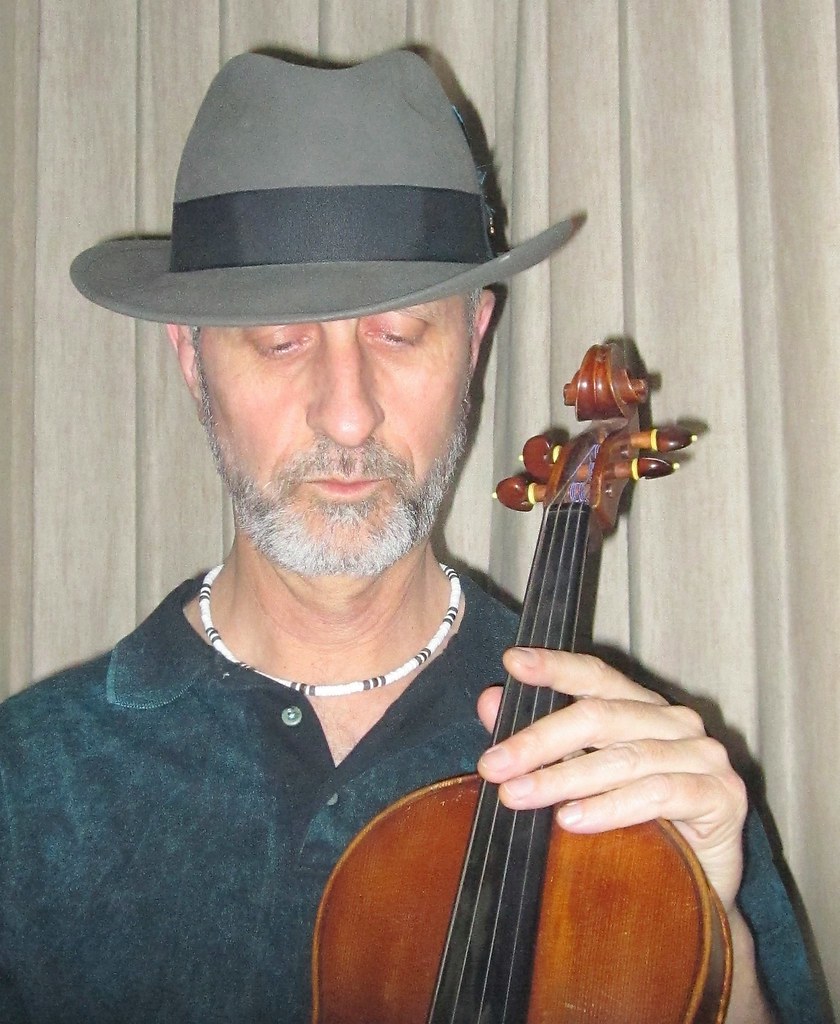
12. Nurturing the Future: Organizations, Research, and the Viola’s Advancement
The renewed interest in the viola by both performers and composers during the 20th century naturally spurred a parallel growth in dedicated research and organizational efforts aimed at advancing the instrument’s standing and understanding. An early, albeit short-lived, attempt at forming a global organization came in 1927 with Paul Hindemith and Vadim Borisovsky’s Violists’ World Union. However, it was not until 1968, with the establishment of the Viola-Forschungsgesellschaft, now known as the International Viola Society (IVS), that a truly lasting and impactful organization took root, providing a collaborative platform for violists worldwide.
Today, the International Viola Society (IVS) comprises twelve chapters across the globe, facilitating international exchange and fostering a vibrant community. Among these, the American Viola Society (AVS) stands as the largest chapter, playing a crucial role in promoting the instrument within the United States. The AVS actively contributes to scholarly discourse through its publication, the *Journal of the American Viola Society*, which disseminates research and articles pertinent to the viola. Furthermore, the society champions excellence and innovation by sponsoring significant competitions, including the David Dalton Research Competition, which encourages new scholarship, and the prestigious Primrose International Viola Competition, recognizing emerging talent and virtuosity.
The 1960s also marked the inception of several key research publications specifically dedicated to the viola, providing foundational resources for scholars and musicians. Franz Zeyringer’s *Literatur für Viola*, first appearing in the 1960s and subsequently in several updated versions, most recently in 1985, became an indispensable bibliographic guide. In 1980, Maurice Riley made the first comprehensive attempt at chronicling the instrument’s story with his *History of the Viola*, followed by a second volume in 1991. The IVS itself contributed to this scholarly output by publishing the multi-language *Viola Yearbook* from 1979 to 1994, during which various national chapters of the IVS also produced their respective newsletters, creating a rich tapestry of information.
Underscoring the commitment to preserving the viola’s legacy and supporting future scholarship, the Primrose International Viola Archive at Brigham Young University stands as the world’s most extensive repository of materials related to the instrument. This invaluable archive houses an unparalleled collection of scores, recordings, historical instruments, and archival materials from some of the most influential violists in history. Such dedicated organizations and research initiatives ensure that the viola’s past, present, and future are meticulously documented, celebrated, and continuously propelled forward, guaranteeing its enduring place in the pantheon of musical instruments.
The viola, once a quiet, unassuming voice in the orchestral fabric, has unequivocally emerged as an instrument of profound depth, versatility, and expressive power. From its humble origins as an ‘arm viol’ to its sophisticated contemporary forms, the viola’s journey is a testament to continuous innovation and growing recognition. Its rich, dark timbre, once primarily relegated to harmonic support, now commands soloistic attention in concertos, lends nuanced textures to modern ensembles, and even finds its way into the unexpected realms of popular music, thanks to the tireless efforts of dedicated luthiers, visionary composers, and passionate violists. The ongoing research and robust organizational support worldwide further underscore a vibrant future for this indispensable instrument, ensuring its unique voice will continue to resonate, inspire, and captivate audiences for generations to come, enriching the global tapestry of sound with its undeniable warmth and emotional resonance.



